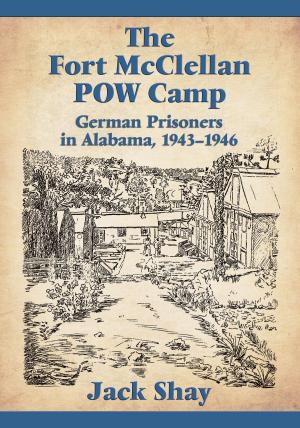The Wilmington & Weldon Railroad in the Civil War
Nonfiction, Reference & Language, Transportation, Railroads, History, Americas, United States, Civil War Period (1850-1877)| Author: | James C. Burke | ISBN: | 9780786493067 |
| Publisher: | McFarland & Company, Inc., Publishers | Publication: | December 18, 2012 |
| Imprint: | Language: | English |
| Author: | James C. Burke |
| ISBN: | 9780786493067 |
| Publisher: | McFarland & Company, Inc., Publishers |
| Publication: | December 18, 2012 |
| Imprint: | |
| Language: | English |
In its early years, the Wilmington & Raleigh Rail Road Company survived multiple threats to its existence. Under its new corporate name, the Wilmington & Weldon Railroad Company would soon be put to the ultimate test, the Civil War. From mobilization to the last effort to supply Lee’s Army of Northern Virginia, the company would endure the wearing out of its equipment and rails; the capriciousness and bureaucracy of the Confederate government; sabotage attempts; the gruesome death of its president; a yellow fever epidemic; Union raids on its facilities and bridges; runaway inflation in Confederate economy; the fall of Wilmington; its bisection by advancing Union forces; and, finally, the unnecessary destruction of locomotives, cars, track, and bridges by retreating Confederate troops. The railroad, unlike the Confederacy, survived, and would eventually transform itself a powerful regional economic force, adapting to the challenges of the New South.
In its early years, the Wilmington & Raleigh Rail Road Company survived multiple threats to its existence. Under its new corporate name, the Wilmington & Weldon Railroad Company would soon be put to the ultimate test, the Civil War. From mobilization to the last effort to supply Lee’s Army of Northern Virginia, the company would endure the wearing out of its equipment and rails; the capriciousness and bureaucracy of the Confederate government; sabotage attempts; the gruesome death of its president; a yellow fever epidemic; Union raids on its facilities and bridges; runaway inflation in Confederate economy; the fall of Wilmington; its bisection by advancing Union forces; and, finally, the unnecessary destruction of locomotives, cars, track, and bridges by retreating Confederate troops. The railroad, unlike the Confederacy, survived, and would eventually transform itself a powerful regional economic force, adapting to the challenges of the New South.















